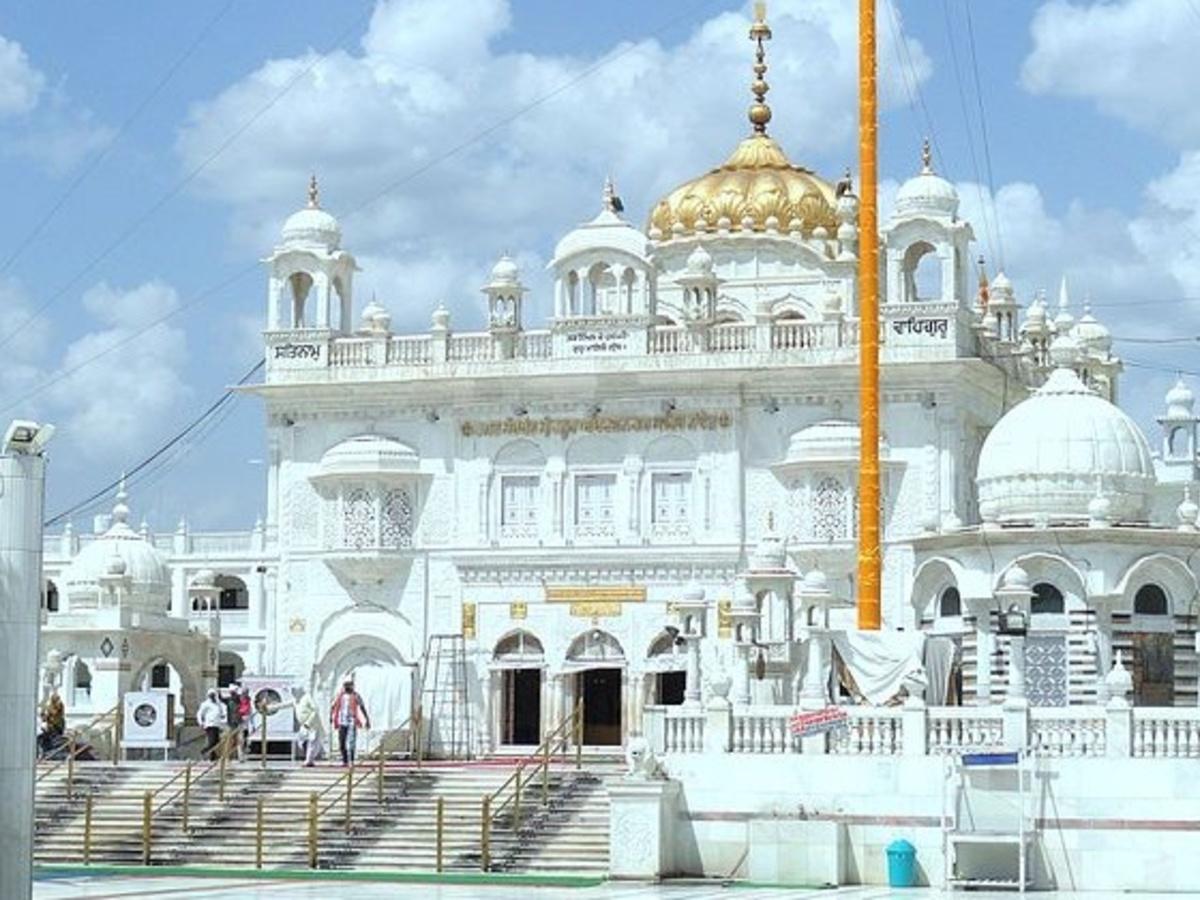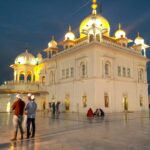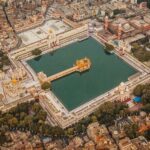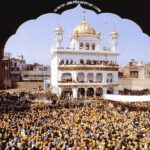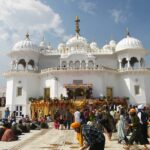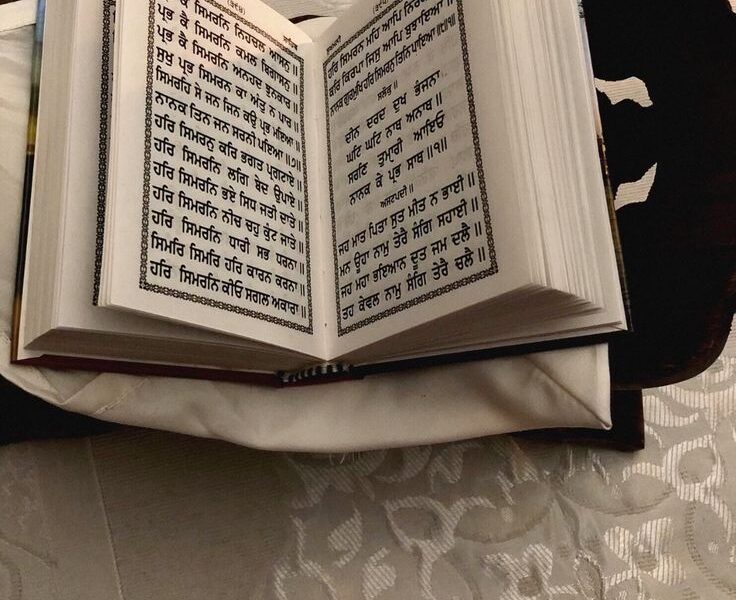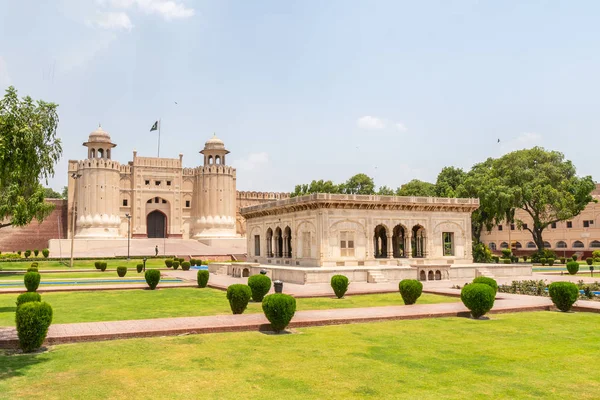Takht Sri Hazur Sahib Gurudwara, situated in the heart of Nanded, Maharashtra, stands as a timeless beacon of Sikh spirituality. This sacred shrine, one of the five Takhts in Sikhism, holds a profound historical significance, tracing its roots back to the esteemed Guru Gobind Singh Ji. As we embark on this journey of exploration, the essence of Takht Sri Hazur Sahib unfolds in the stories etched in its walls and the serenity that pervades its surroundings.
Importance of the Gurudwara in Sikhism
The Gurudwara holds a unique and revered status in Sikhism, signifying both spiritual and historical importance. It stands as the hallowed ground where Guru Gobind Singh Ji, the tenth Sikh Guru, spent his last moments on Earth. The Takht represents the temporal authority and spiritual leadership of the Guru. Its significance extends beyond the physical realm, embodying the teachings, sacrifices, and the vibrant spirit of Sikhism. Understanding its importance requires delving into the historical narrative that makes Takht Sri Hazur Sahib a sacred pilgrimage site for millions.
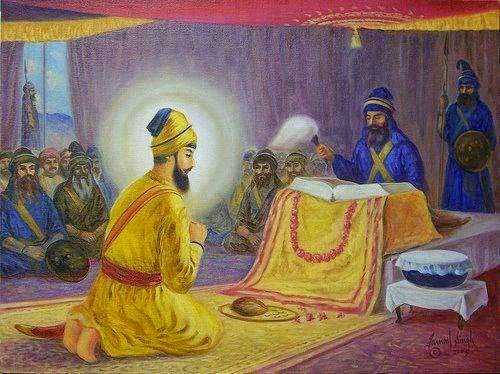
History
During Emperor Bahadur Shah’s southern expedition via Rajputana, Guru Gobind Singh, accompanied by his disciples, joined the march. The journey brought them to Nanded in August 1708, following crossings of the Tapti and Ban Ganga. While Bahadur Shah continued to Golkonda, Guru Gobind Singh chose to stay in Nanded. Here, he converted a Vaishnavite Bairagi recluse named Madho Das, who, upon initiation into the Khalsa fold, became Banda Singh.
Nanded also saw the arrival of two Pathans from Punjab, hired by Wazir Khan of Sirhind due to concerns about the ongoing negotiations between the Emperor and Guru Gobind Singh. Disguised as interested listeners, the Pathans attended the evening diwan. One night, they attacked the Guru, leading to a fatal encounter where one Pathan was killed by the Guru himself, and the other met his end while attempting to escape.

Although initially healed by a European surgeon, the Guru’s wound reopened a few days later. On October 7, 1708, Guru Gobind Singh, after declaring the Guru Granth Sahib as his successor, merged with the divine.
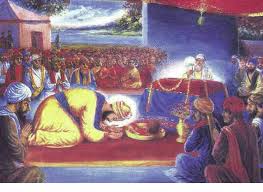
Before his passing, Guru Gobind Singh entrusted Santokh Singh and other Sikhs to continue running the Guru ka Langar in Nanded. The Sikhs constructed a room over the platform where the Guru held court, naming it Takht Sahib. Nanded, christened ‘Abchal nagar’ by Guru Gobind Singh, meaning ‘immortal town,’ became the eternal abode of Sikh spirituality.
Gurdwara Construction
Constructed between 1832 and 1837 under the directive of Maharaja Ranjit Singh (1780–1839), the gurdwara is a testament to his vision. Maharaja Ranjit Singh, often referred to as Sher-e-Panjab, oversaw the creation of a two-story gurdwara at the site, crowned with a majestic golden dome. This period witnessed a significant influx of Sikh artisans and laborers to Nanded.
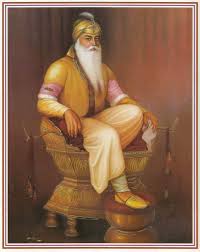
Simultaneously, the Nizam of Hyderabad, a Muslim ruler of the Deccan Region, recruited Northern Sikhs into his army. Many of these Sikhs settled permanently in Hyderabad State, and numerous fervent Hindus in the Deccan embraced Sikhism during the 19th century. The local Hindu community also developed a deep respect for Guru Gobind Singh and the gurdwara.
The current gurdwara structure, completed on April 13, 1968, was constructed by Gulab Singh from New Delhi. The main hall features a canopied throne made of white marble, serving as the sacred space where the Guru Granth Sahib is enshrined. This architectural masterpiece stands as a symbol of devotion and cultural integration, embodying the spirit of Sikhism in the heart of Nanded.
Historical Significance
The establishment of Takht Sri Hazur Sahib
Takht Sri Hazur Sahib Gurudwara traces its origins to the early 18th century when it was established to commemorate the presence of Guru Gobind Singh Ji, the tenth Sikh Guru. The Gurudwara was constructed at the site where Guru Gobind Singh Ji left his mortal body in 1708. This sacred spot became a place of spiritual reverence and was eventually recognized as one of the five Takhts in Sikhism, symbolizing a throne of authority.
Events leading to Guru Gobind Singh Ji’s presence
The journey leading to Guru Gobind Singh Ji’s presence in Nanded unfolded amidst the times of Sikh history. The Guru, facing external challenges and conflicts, arrived in Nanded seeking refuge. It was during his stay in Nanded that he made significant decisions, including the establishment of the Khalsa and the completion of the Guru Granth Sahib, the holy scripture of Sikhism. Guru Gobind Singh Ji’s presence in Nanded marked a pivotal moment in Sikh history, shaping the course of the faith and leaving an indelible mark on the Gurudwara’s sanctity.
The significance of Nanded in Sikh history
Nanded, in the context of Sikh history, holds a unique importance as the final resting place of Guru Gobind Singh Ji. The city became a witness to crucial events that unfolded during the Guru’s time, making it a revered destination for Sikhs worldwide. Nanded’s significance lies not only in its historical role as the backdrop of Guru Gobind Singh Ji’s final moments but also in its continued connection to Sikh traditions and spirituality, making it a central pilgrimage site for followers of the faith.
*Architectural Marvels
Overview of the Gurudwara’s architecture
Takht Sri Hazur Sahib Gurudwara stands as a splendid testament to Sikh architectural brilliance. The Gurudwara’s design seamlessly weaves together traditional Sikh architectural elements with modern aesthetics. The main complex boasts intricate carvings, domes, and a breathtaking golden facade that captivates visitors upon arrival. The entire architectural layout is meticulously planned, creating a harmonious environment that complements the spiritual atmosphere of the Gurudwara. The expansive grounds surrounding the main structure contribute to the overall serenity, offering a peaceful retreat for devotees and visitors.
Symbolism behind the design elements
Every facet of Takht Sri Hazur Sahib’s architecture carries profound symbolism rooted in Sikh philosophy. The domes, representing spiritual ascent and divine connection, adorn the skyline. Intricate carvings and patterns on the walls depict the rich tapestry of Sikh history and the teachings of the Gurus. The architectural symmetry symbolizes the unity of the Sikh community and their commitment to equality. Additionally, the Guru Ka Bagh, a serene garden adjacent to the main complex, holds its own symbolic significance as a place where congregations and spiritual discourses took place. Each design element serves as a visual narrative, narrating the story of Sikhism’s journey and reinforcing the spiritual ethos of the Gurudwara.
Importance of the golden facade
The golden facade of Takht Sri Hazur Sahib Gurudwara is more than just a dazzling spectacle; it holds deep spiritual significance. The gold covering symbolizes purity, divinity, and the everlasting radiance of Sikh teachings. The gleaming exterior reflects the grandeur and reverence associated with the Guru’s abode. Beyond its aesthetic allure, the golden facade serves as a reminder of the spiritual wealth encapsulated within the Gurudwara’s walls. It becomes a source of inspiration for devotees, signifying the eternal light of Guru’s teachings that illuminate the path of righteousness. The golden exterior stands as a beacon, drawing pilgrims from far and wide to witness the divine brilliance encapsulated in Takht Sri Hazur Sahib Gurudwara’s architectural splendor.
*Guru Ka Bagh: A Tranquil Garden of Spiritual Wisdom
Takht Sri Hazur Sahib isn’t just a beautiful building; it’s a place of many stories, and Guru Ka Bagh is a special part of it all. The Sikhs built a room over the platform where Guru Gobind Singh Ji would sit while holding his court and installed Guru Granth Sahib Ji on it. They called it Takhat Sahib. Guru Gobind Singh Ji, while conferring Guruship to Guru Granth Sahib Ji, had himself named Nanded as “Abchalnagar” (literally “Steadfast city”) after the first word of a hymn read at random on the occasion. Guru Ka Bagh is that serene place where the Guru’s words filled the air, and today, it stands as a living memory of those moments. The rustling leaves and blossoming flowers seem to echo the ancient wisdom imparted within these sacred grounds.
The inner room of the Gurdwara, known as Angitha Sahib, stands on the very place where Guru Gobind Singh was cremated in 1708. This location has gained significance as one of the five Takhat Sahibs, holding paramount importance for Sikhs. The other four Takhat Sahibs include Akal Takht in Amritsar, Takht Keshgarh Sahib in Anandpur, Takhat Patna Sahib in Bihar district, and Takhat Damdama Sahib in Bathinda, Punjab.
The two-story structure building artistically adorned in the style of Harmandir Sahib, Amritsar. The walls of Angitha Sahib are adorned with golden plates, and the ‘Kalash,’ crafted from copper, features a dome that is polished and plated with gold on the apex. Within this sacred space, various relics of Guru Gobind Singh are meticulously preserved. Notable items include a golden dagger, a kadelock gun, a quiver containing 35 arrows, two bows and arrows, a steel shield embellished with precious stones, and five golden swords. These artifacts contribute to the reverence and historical significance of the site.

Bunga Mai Bhago: A Memorial of Bravery
Nearby, there’s a place called Bunga Mai Bhago, a memorial dedicated to a brave woman named Mai Bhago. She fearlessly fought alongside Guru Gobind Singh Ji in a historic battle. Visiting this site takes us back to the time when Mai Bhago’s courage became a symbol of strength and devotion. The memorial is a reminder of the incredible stories woven into the history of Takht Sri Hazur Sahib.
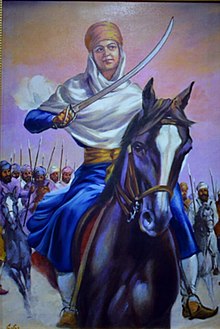
Connecting with History in Simplicity
Exploring Guru Ka Bagh and Bunga Mai Bhago isn’t just about looking at old places; it’s about feeling the history come alive. These sites connect us to a time of spiritual teachings, bravery, and the deep bond between the Guru and his followers. The simple beauty of Guru Ka Bagh and the courage echoed in Bunga Mai Bhago create a unique atmosphere, inviting everyone to step into the past and experience the simplicity and significance of these sacred sites at Takht Sri Hazur Sahib.
The control of Takhat Sachkhand Sri Hazoor Sahib, once in the hands of Udasi Sikh priests, was reclaimed by the Sikhs during the late nineteenth century Singh Sabha Movement. Unique rituals and ceremonies are associated with this Takhat Sahib. In 1956, the legislature of Hyderabad enacted a law, placing the management of Takhat Sahib and other historic Gurdwaras under a 17-member Gurudwaras Board and a five-member Managing Committee.
This Takht is home to both the Sri Guru Granth Sahib Ji and the Sri Dasam Granth, aligning with the tradition of Takht Sri Patna Sahib. Nanded, the sacred city, holds historical significance as the ashram of Baba Banda Singh Bahadur and the starting point of his Khalsa victory journey.
Distinguished from other Sikh places of worship, Takhat Sachkhand Sri Hazoor Sahib maintains ancient customs observed during the Guru’s era. For instance, the application of sandalwood tilak on the foreheads of priests and local devotees continues.
A unique feature of this shrine is the presence of two sanctum sanctorums. While all ceremonies are conducted in the outer room by the priests, the inner vault safeguards invaluable objects, weapons, and personal belongings of the Guru. Access to this sacred vault is restricted, permitted only to the head priest.
A Spiritual Journey at Takht Sri Hazur Sahib: Connecting Hearts and Landscapes
Pilgrimage Experience:
My pilgrimage to Takht Sri Hazur Sahib was more than a journey; it was a tapestry of personal reflections and spiritual discoveries. As I walked through the hallowed halls, I couldn’t help but feel a profound connection to the history and teachings of Sikhism. One memorable moment was sitting in the quiet corners, listening to the rhythmic recitation of prayers—a tranquil pause that allowed me to reflect on my own journey and purpose.
Surrounding Landscape:
The Nanded district, where Takht Sri Hazur Sahib resides, is a canvas of simplicity and natural beauty. The landscape, with its lush greenery and flowing rivers, provides a serene backdrop to the spiritual haven. As I strolled through the Gurudwara’s surroundings, the peaceful ambiance of the landscape seemed to harmonize with the sanctity of the place. The gentle rustling of leaves and the distant sounds of flowing water created an atmosphere of tranquility, enhancing the overall spiritual experience.
Community Engagement and Social Initiatives:
Takht Sri Hazur Sahib extends its embrace beyond spiritual realms into the local community. Witnessing the Gurudwara’s role in community development is inspiring. From educational initiatives to healthcare services, the impact is tangible. The Gurudwara’s social initiatives, like the community kitchen providing free meals to all, exemplify the Sikh principles of selfless service and equality. The ripple effect extends beyond Nanded, leaving an indelible mark on the lives it touches, fostering a sense of unity and compassion.
Panj Piyare of Takht Sri Hazur Sahib
- Sant Baba Kulwant Singh Ji – Jathedar Takhat Sachkhand Sri Hazur Abchalnagar Sahib Nanded.
- Bhai Jotinder Singh Ji – Meet Jathedar Takhat Sachkhand Sri Hazur Abchalnagar Sahib Nanded.
- Bhai Kashmir Singh Ji – Head Granthi Takhat Sachkhand Sri Hazur Abchalnagar Sahib Nanded.
- Bhai Gurmeet SIngh Ji – Meet Granthi Takhat Sachkhand Sri Hazur Abchalnagar Sahib Nanded.
- Bhai Ram Singh Ji – Dhupia Takhat Sachkhand Sri Hazur Abchalnagar Sahib Nanded.
Gurdwara Construction
Constructed between 1832 and 1837 under the directive of Maharaja Ranjit Singh (1780–1839), the gurdwara is a testament to his vision. Maharaja Ranjit Singh, often referred to as Sher-e-Panjab, oversaw the creation of a two-story gurdwara at the site, crowned with a majestic golden dome. This period witnessed a significant influx of Sikh artisans and laborers to Nanded.
Simultaneously, the Nizam of Hyderabad, a Muslim ruler of the Deccan Region, recruited Northern Sikhs into his army. Many of these Sikhs settled permanently in Hyderabad State, and numerous fervent Hindus in the Deccan embraced Sikhism during the 19th century. The local Hindu community also developed a deep respect for Guru Gobind Singh and the gurdwara.
The current gurdwara structure, completed on April 13, 1968, was constructed by Gulab Singh from New Delhi. The main hall features a canopied throne made of white marble, serving as the sacred space where the Guru Granth Sahib is enshrined. This architectural masterpiece stands as a symbol of devotion and cultural integration, embodying the spirit of Sikhism in the heart of Nanded.
The Gurudwara stands not only as a spiritual beacon but also as a source of positive change in the lives of those it serves. As I left, I carried with me not just the memories of a physical journey but a heart full of gratitude and a renewed sense of purpose. Takht Sri Hazur Sahib, with its simplicity and grandeur, had become a part of my own spiritual landscape.
A laser show has been started at Gobind Bagh, situated near the main Gurdwara. This visually stunning presentation succinctly narrates the lives of the ten Gurus, offering a beautiful and brief depiction of their remarkable journeys. The conceptualization and direction of the show are credited to Jasbir Singh Dham, accompanied by the soulful musical compositions and commentary provided by renowned ghazal singer Jagjit Singh. The show is scheduled daily, enchanting audiences from 7:30 PM to 8:30 PM. This immersive experience serves as a poignant tribute to the rich legacy and teachings of the Sikh Gurus.
